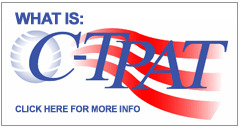While it’s tempting to become impressed with state-of-the-art asset protection technology, it can prove costly to be lulled into a false sense of security. With internal theft and cargo crime spiking, the last thing that any company can afford is to be blindsided by a six or seven figure loss. However, that’s exactly what’s been happening to companies throughout the country that have placed too much confidence in the security technology they’ve acquired.
Security technology can certainly be beneficial, however there are also weaknesses in these systems that are being exploited by dishonest employees. Here are some examples:
CCTV – Although some overzealous sales people would like you to believe that the existence of a few dozen cameras throughout your facility will virtually guarantee a theft-free environment, this is simply not true. In fact, more than 90% of the companies contacting us to investigate significant theft-related loss already have video systems in place. If closed circuit television effectively deterred dishonesty, these companies wouldn’t be missing large quantities of their inventory.
Why doesn’t CCTV prevent or expose insider theft? One of the primary reasons is that fraud and collusion look exactly like standard operating procedure. There are no bells or whistles going off when employees steal product through the shipping, receiving, customer pick-up, transfer or return functions – and these are the areas where large scale theft regularly occurs in the typical distribution center.
Another reason why video systems oftentimes fail to protect companies from theft is because few executives have the time, patience or inclination to watch live or archived activity. Unfortunately, dishonest workers are well aware of this fact. In this respect, a video system is no different than a piece of exercise equipment. Simply purchasing it won’t provide any benefit. Unless it’s regularly used, it provides little or no return on your investment.
RFID – A recent DC Velocity article referenced a survey of companies using radio frequency identification systems, where nearly half of the respondents had problems, such as signal disruptions, integration issues and unit failure.
Beyond the technical glitches, it’s important to keep in mind that RFID was never intended to protect against internal theft. Designed as an operational tracking tool, it is not immune from manipulation by employees who have access to the devices. Dishonest workers intent on concealing their theft activity can defeat RFID tags and readers a number of ways, at which point the tracking capability is completely neutralized.
Bar code scanning– The forerunner of RFID is still used by many companies today. Like RFID, it provides many operational benefits. However, it won’t stop internal theft.
If, for example, a devious selector or loader wants to place four extra cases of inventory onto the truck of a driver he’s working in collusion with, he simply won’t scan the extra boxes. It’s that simple.
A similar scenario can also take place in the receiving function. We’ve caught receivers who were paid thousands of dollars from dishonest drivers because they allowed the truckers to keep a percentage of the product they were supposed to deliver. The receivers concealed their theft by scanning the same cases multiple times, which was possible because many manufacturers don’t assign personalized bar codes for the same SKU’s.
GPS– Many companies initially invested in global positioning satellite technology when it was introduced because they thought they would be able to put a stop to trucker theft. Although GPS has been effective at exposing drivers who extend their breaks, it has been repeatedly defeated by dishonest drivers selling product off their trucks.
Dishonest drivers can have their trucks overloaded with product by warehouse personnel working in unison with them, thereby creating extra inventory that can be subsequently sold for cash.
Drivers can also prey on customers that don’t carefully check in their shipments and deliberately short them on their deliveries, which results in extra cases that could then be illegally sold.
In order to avoid detection via GPS tracking when they illegally transact the product for cash, dishonest drivers will meet their accomplices and offload the stolen product during their authorized break periods at diners or rest stops, rather than going off route. In other cases, drivers will stay under the radar by selling the hot goods in proximity of their authorized delivery locations, claiming they were waiting for an available door to make their delivery. Consequently, drivers looking to profit at their employer’s expense are not intimated by having GPS in their vehicles.
Technology can add significant value to a loss prevention program. However, it’s not a cure-all. Carefully selecting and integrating the right technology with Best Security Practices, has provento be the most effective way to protect against internal theft.



